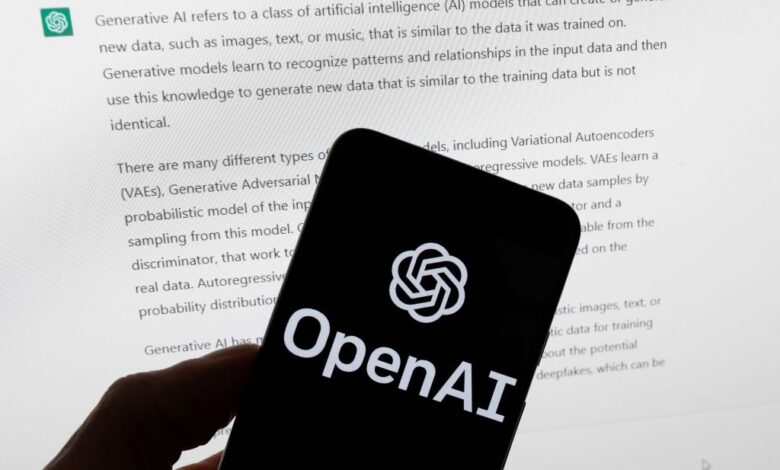AI revolution will rival the Industrial one

The OpenAI logo is seen on a mobile phone in front of a computer screen displaying output from ChatGPT last year in Boston. (AP Photo/Michael Dwyer, File)
A new age in the human experience on Earth is underway. It is an age of change as profound — and possibly more so — than the Industrial Revolution, when the steam engine introduced the concept of post-animal labor.
Artificial intelligence in this new age is infiltrating all areas of human endeavor.
Some things will change totally, like work: It will end much menial work and a whole tranche of white-collar jobs. Some things it will enhance beyond imagination, like medicine and associated longevity.
Some AI will threaten, some it will annihilate.
It will test our understanding of the truth in a post-fact world. The veracity of every claim will be subject to investigation, from what happened in history to current election results.
At the center of the upheaval in AI is electricity. Electricity is essential for the computers that support AI. However, AI is putting an incalculable strain on the electric supply.
At its annual meeting, the U.S. Energy Association learned that a search on Google today uses a tenth of the electricity as the same search on ChatGPT. Across the world, data centers are demanding an increasing supply of uninterruptible electricity 24/7. Utilities love this new business but fear they won’t be able to service it going forward.
Fortunately, AI is a valuable tool for utilities, and they are beginning to employ it increasingly in their operations, from customer services to harnessing distributed resources in what are called virtual power plants, to things such as weather prediction, counting dead trees for fire suppression, and mapping future demand.
Electricity is on the verge of a new age. And new technologies, in tandem with the relentless growth in AI, are set to overhaul our expectations for electricity generation and increase demand for it.
Fusion power, small modular reactors, viable flexible storage in the form of new battery technology and upgraded old battery technology, better transmission lines, and doubling the amount of power that can be moved from where it is made to where it is desperately needed are all on the horizon, and will penetrate the market in the next 10 years.
Synchronizing new demand with new supply has yet to happen, but electricity provision is on the march as inexorably as is AI. Together, they hold the keys to a new human future.
At NASA’s first symposium on AI on June 11 at Goddard Space Flight Center in Greenbelt, Md., Pilar Manchon, Google’s senior director of AI, said she thought this was the beginning of humankind’s greatest adventure. The very beginning of a new age.
A bit of backstage criticism was that the commercial pressure for the tech giants to get to market with their generative AI products has been so great that they have been releasing them before all the bugs have been ironed out — hence some of the recent ludicrous search results, like the one from this question, “How do you keep the cheese on pizza?” The answer, apparently, was with “glue.”
However, everyone agreed that these and other hallucinations won’t affect the conquering march of AI.
Llewellyn King is the executive producer and host of “White House Chronicle” on PBS/InsideSources



